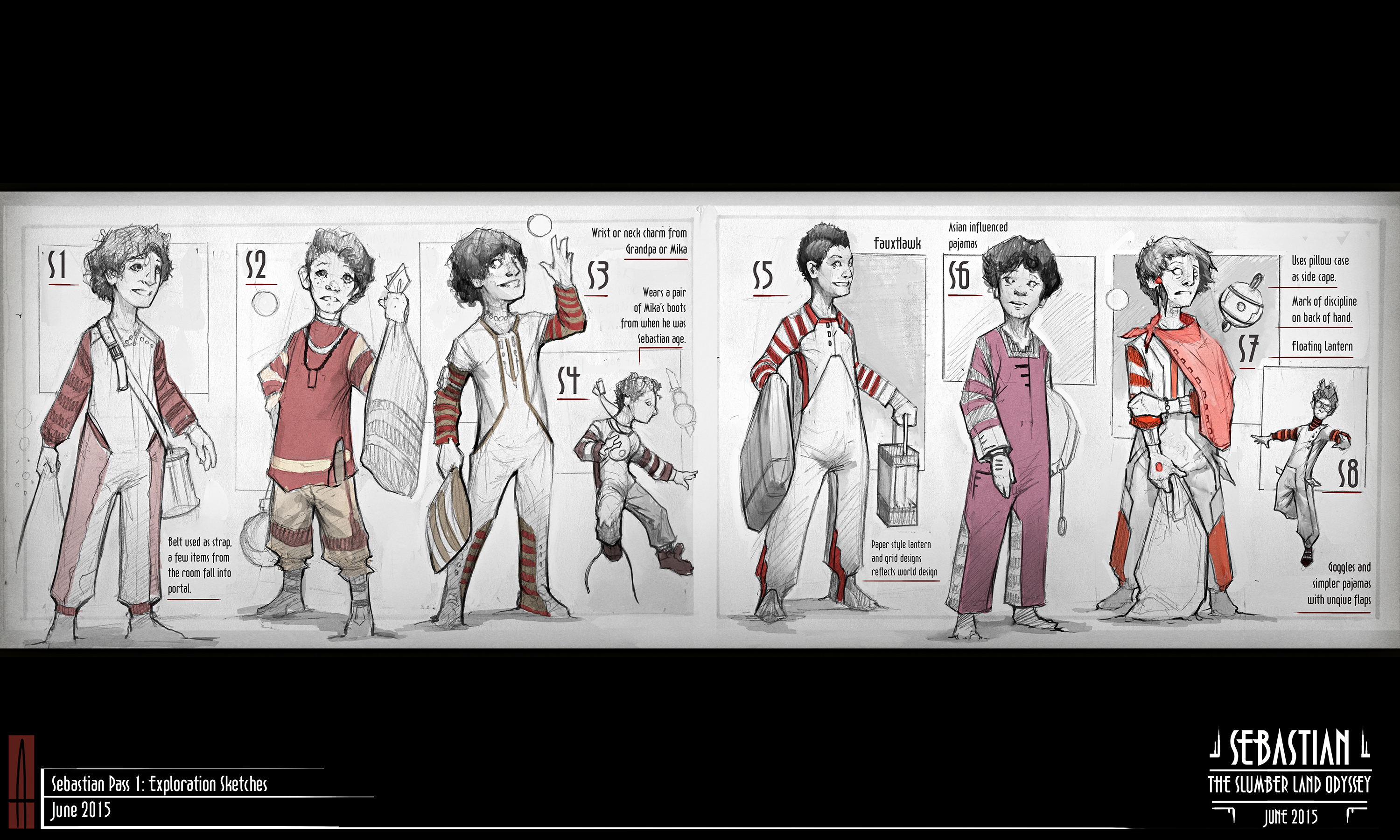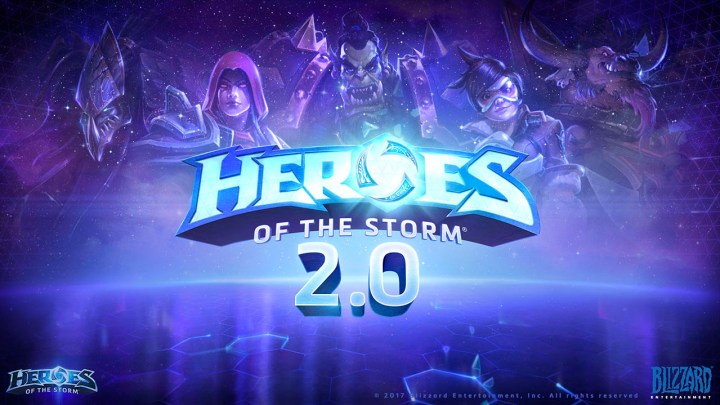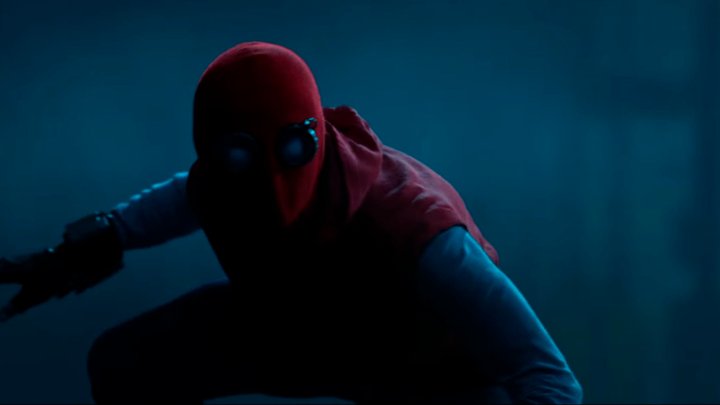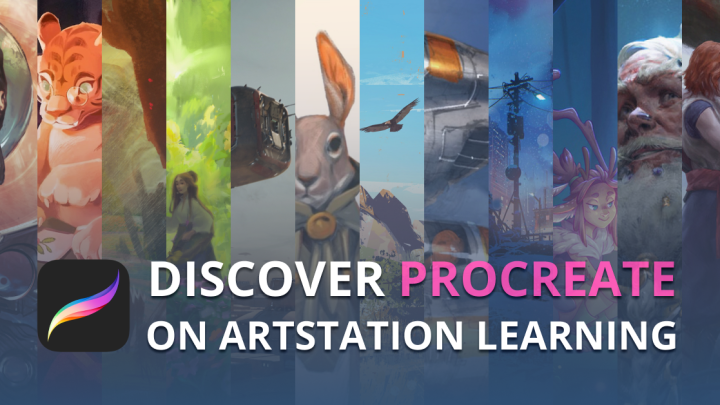Fede Ponce on his eight-year quest to create Sebastian: The Slumberland Odyssey
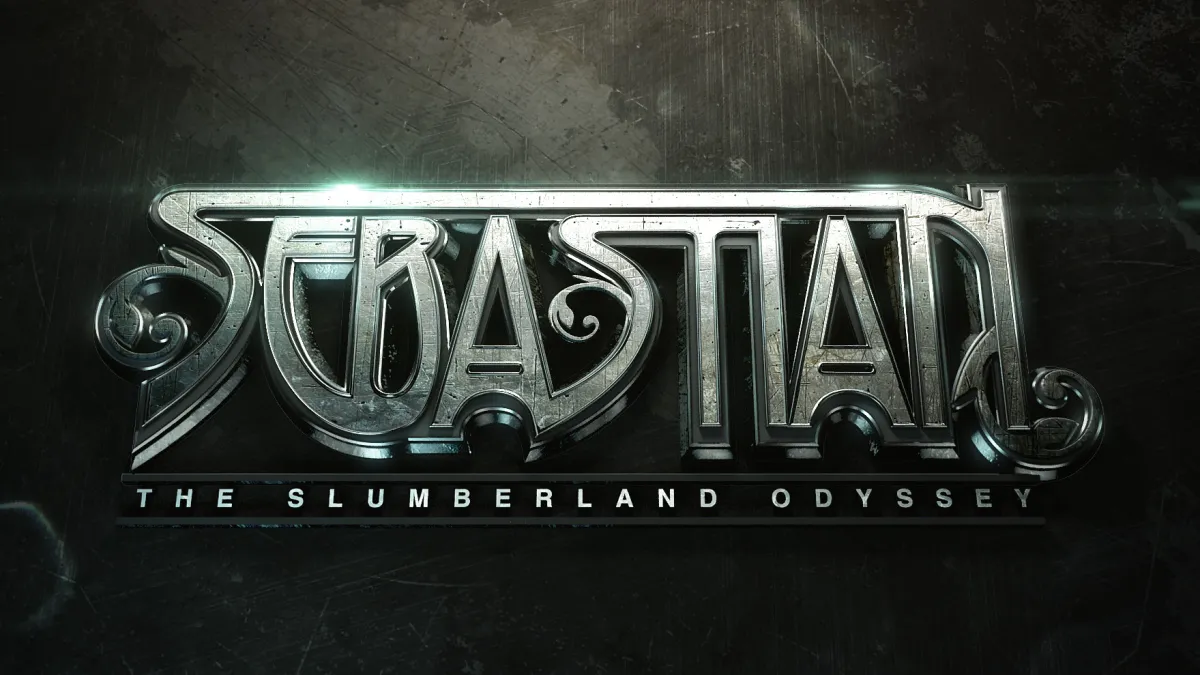
 For the past eight years, Fede Ponce has led a double life. For most of the year, the designer and art director creates titles and trailers for blockbuster movies like The Avengers and Thor. But between commercial jobs, he funnels all of his energy into Sebastian: The Slumberland Odyssey, his own ‘science fantasy’ series – now looking for funding on Kickstarter.
For the past eight years, Fede Ponce has led a double life. For most of the year, the designer and art director creates titles and trailers for blockbuster movies like The Avengers and Thor. But between commercial jobs, he funnels all of his energy into Sebastian: The Slumberland Odyssey, his own ‘science fantasy’ series – now looking for funding on Kickstarter.
Set in a future in which artificial intelligence has overcome war and poverty, but unauthorised dreaming is punishable by death, Sebastian: The Slumberland Odyssey follows two brothers: Mika and Sebastian. When Mika disappears, Sebastian must venture into the dream world to find his missing brother, and to find a cure for his dying grandfather.
Creative collaborators on the project include the leading concept artist Shaddy Safadi, founder of One Pixel Brush, illustrator Phillip Dickenson, character designer Anthony Sixto and digital sculptor Petur Arnorsson – the latter two of whom Fede met through ArtStation.
Ultimately planned as a three-season live-action series, Fede is currently aiming to raise $220,000 on Kickstarter to produce a VFX-heavy 30-minute pilot episode and a 30-page full-colour graphic novel fleshing out Sebastian’s cinematic universe.
But along the way, he has also written a complete 120-minute movie script, been mentored by Bertha Navarro, producer of Guillermo del Toro’s early movies – and faced down con-men and critical incomprehension on the Hollywood funding circuit.
Below, we talk to Fede about the challenges he faced in that long journey to develop Sebastian: The Slumberland Odyssey. Next week, we’ll reveal his 10 key tips for artists hoping to follow in his footsteps and create their own intellectual property.
When did you start work on Sebastian?
About eight years ago. I wasn’t a director at the time: I was doing trailers and some visual effects work. I had a younger brother who I didn’t get to see that much because we lived in two different countries: he lived in Mexico City and I lived here [in LA]. Our lives split at a very pivotal moment and I missed him a lot. So the few chances I got, we would spend telling each other stories.
Every night, I’d tell him these stories about two brothers who went on adventures in the dream world, and the following morning, I’d ask him to tell me what had happened [next].
Within a few years, we had a ton of stories we’d created together. I showed them to a friend of mine who said I might have something worth turning into a graphic novel or a script. The thought was a bit overwhelming, but I started creating a script for a 120-minute feature film.
How long did it take to write the script?
It took me about eight months, and when it was finished, I started showing it around to my friends. Lionel [Frid], one of my producers, had a connection to Bertha Navarro, who produced Pan’s Labyrinth, and persuaded me to let him show it to her. It was a nerve-wracking experience, as it was my first screenplay, and I didn’t have any formal experience as a writer.
It took her a year to get back to us, and during that year, I took a lot of writing courses, trying to submerge myself in that world. When she eventually reached back, she was very sweet and very kind. She said, the script is a little rough, but I like it: why don’t you come down to Mexico and I’ll introduce you to some other writers so you can polish it?
It was a really intense experience: I was writing and rewriting, trying to put years of my life into the script, and it seemed like an impossible task: there was so much I wanted to say. Eventually, one of the other writers [suggested splitting] it into a series. Once I did, everything fell into place.
How did you go about looking for funding?
Because Lionel believed in the project so much, he moved to LA and started pitching it around studios, around investors. He’s been incredible – very few times in life is there a person who supports you as much as he supported me.
Even though I had a background in the industry, as a first-time director, it was an exhausting search. There are a lot of really talented people down here doing incredible stuff. When we finally found some good leads, the feedback was that we’d need to create a community around the project first. So we started doing that. We jumped through a lot of hoops. But once people started taking a serious interest in it, we started getting all these ridiculous creative notes.
What kinds of notes?
The story is about a kid who goes to the dream world to try to find his dying grandfather, and to find his missing brother. The crux of the story is that he goes to this forbidden place, and has to find these magical elements. The elements are a metaphor for his own mental capacities. And people didn’t get it. They were asking if he could travel to the dream world on a rocket.
There’s also a scene where a mermaid comes up to Sebastian, and tells him that not everything that shines is gold. She’s alluding to the desires of the subconscious mind, but we had this guy who was just obsessed. He kept asking if we could add more mermaids, and if they could be topless. He said we could make it an R rating.
Film is the riskiest business in the world. I understand that. But it became very clear that the compromises that we’d have to make to get this thing made were just ludicrous.
Lionel and I had spent a lot of time and money trying to push the project, and eventually we got a little burned out. Lionel took some time off, and I decided to go down the crowdfunding route. I wanted to start small, with a 30-minute pilot, so that’s where we are right now.
What are you hoping to fund with the Kickstarter campaign?
In this initial process, we’re hoping to raise enough money to get the pilot going, and also to deliver a visual novel. Because I’ve worked in this industry for such a long time, I’ve developed really good relationships with VFX studios, and I know, because I’ve done it for smaller projects, that we can pull together a very solid crew and create the pilot for $220,000.
For the viewers, having a visual novel creates a much richer experience. And when you develop the script of a graphic novel, you’re pretty much creating a shooting script. You’re creating the style and the art direction [of the project]. It kills two birds with one stone.
And if you get beyond the pilot?
The IP itself is a complete cinematic universe. It’s a series, a graphic novel, and all these other parts that will help build the world.
The story is thought out as three main seasons. It follows Sebastian across his entire lifespan. It starts out with Sebastian when he’s a kid and ends with him a senior adult. We’re hoping to do 12 episodes of an hour each for each season. It’s all plotted out, but not fully scripted.
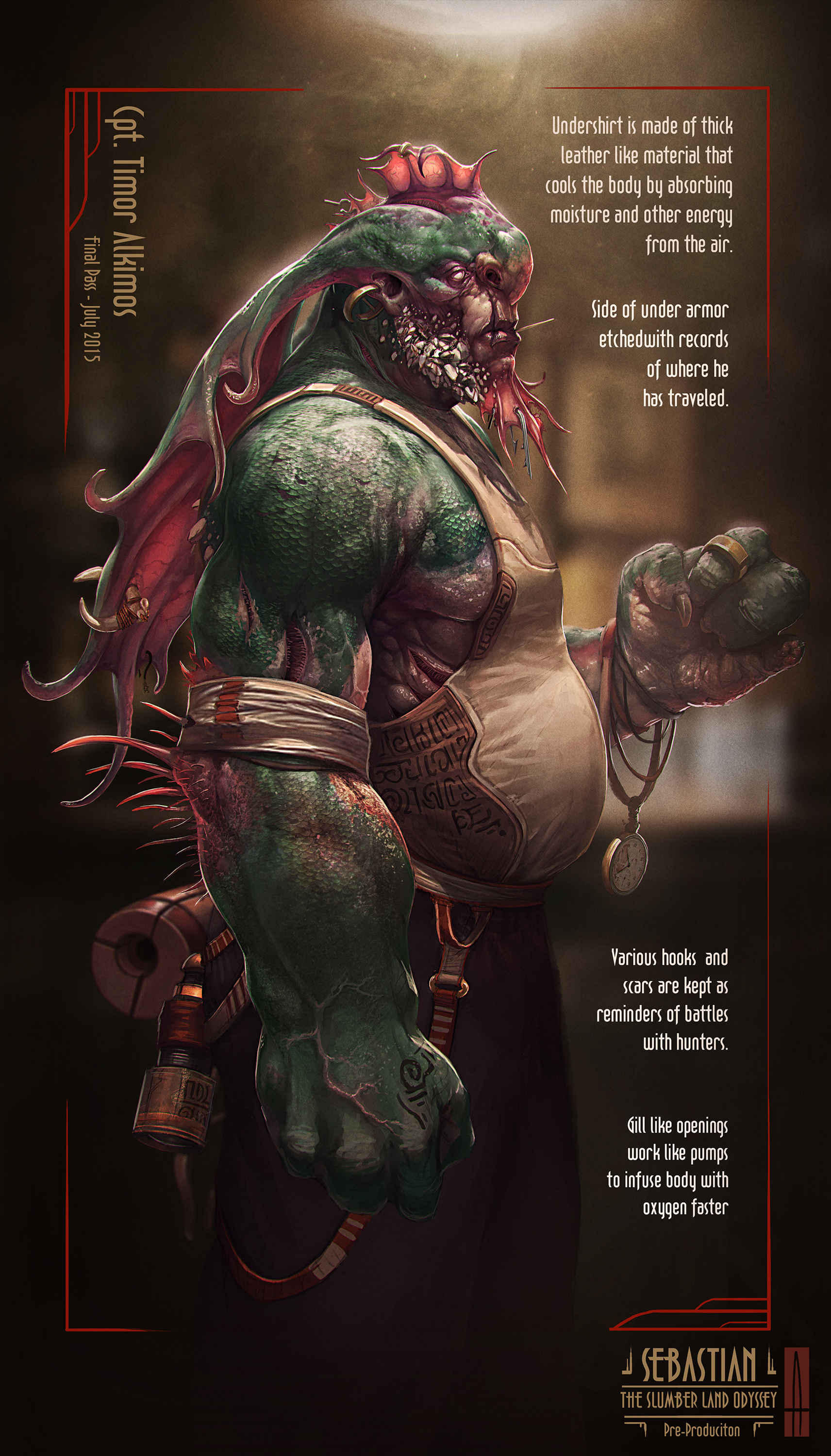
Art from Sebastian: The Slumberland Odyssey, created by character designer Anthony Sixto to accompany the crowdfunding campaign for the pilot episode and graphic novel.
What’s the target audience for Sebastian?
The target age is anywhere from 12 to 40. I grew up with 80s movies like The NeverEnding Story, Labyrinth and Willow, and people who’ve seen those movies will resonate with Sebastian. Those movies were life-changing to me. There was something very personal about them. They weren’t just about visual spectacle: there was a mythology behind them.
And people who’ve seen The Matrix [should see something familiar in Sebastian]. The Matrix was the first movie that prompted me to question the nature of reality. In Sebastian, there’s a lot of social commentary, a lot of discussion about the subconscious, but in an entertaining way.
And then of course we have the visuals, which is a little bit more of a comedic approach. The kids will be able to enjoy seeing another kid riding a winged doberman, fighting dragons!
How autobiographical is the story?
Sebastian is a bit older than my brother was. He’s around 12-14 years old, and I started when my brother was seven. People ask me if we’re in the story, but it’s not like that. The characters are a mix of people. It’s based on the dynamic we had, but the characters are fictional.
And while I was writing the script, my relationship with my brother changed. It evolved from a childlike fantasy dynamic to something a little bit more complex, because he’s a teenager now. At the start he loved the movie; now I don’t think he’s interested in it.
The hardest part for me has been to see that: to have this project that talked about this beautiful, almost pure connection that we had, and having to remain attached to that, while in real life we were going through all these changes.
If the Kickstarter campaign is successful, how will you feel?
Hah! I think I’m going to feel ready for a really long nap. No, I think I’m going to be terrified. Because then I’ll know: now it’s show time. It’s time to bring my A game. It’s time to bring my 12 years of experience and really create something that will blow people away.
The crowdfunding campaign for Sebastian: The Slumberland Odyssey runs until Wednesday 11 November. You can back the project on Kickstarter.

